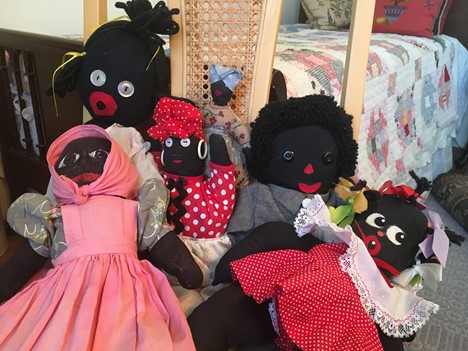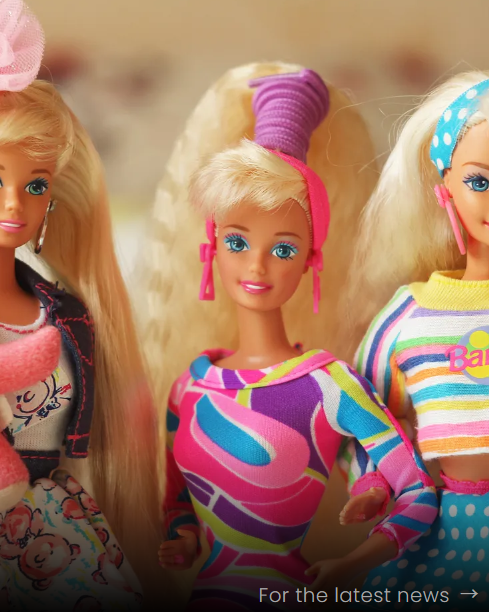The release of the new movie, “Barbie,” reminded me of how years of imagery about skin color has shaped our unconscious minds.
A white friend of mine, in her sixties, knew I was involved in race and equity issues and asked me a couple of years ago what I thought she should do with her Black doll collection.
“Black dolls? What do you mean?” I asked, more wondering why on earth she had them and, more importantly, what she was even talking about. Nancy grew up white and privileged in the Deep South, and while she has tremendous compassion and empathy for people of color, I was perplexed by her owning these dolls. Dolls I didn’t even think existed.
“When you say you have Black dolls, how old are we talking?” I wanted to know. I was a child of the 1970s and ’80s, and I don’t recall Black dolls lining the shelves at K·-B Toys, Toys “R” Us, or any other store for that matter.
It turns out her dolls are from the early 1900s. Her family purchased the collection in the small town of Washington, Louisiana. Technically, a village. Population 914. Half white. Half Black.
I was stunned. Black dolls from 100 years ago? How was that possible? And why were there none I recall seeing in the ’70s and ’80s?
It turns out, in 1907, Baptist minister and businessman Richard Henry Boyd searched high and low to buy his Brown children dolls that represented what they looked like.
Other than scores of dark Black dolls that depicted racist caricatures of Africans on the market, like the ones my friend Nancy ended up having, there weren’t any “positive,” let alone accurate, dolls to be found. Boyd wanted to put an end to these racist images on dolls and give young Black and Brown girls authentically familiar faces to play with and smile back.

My friend’s racist doll collection from the early 1900s
So Boyd founded the National Negro Doll Company in Nashville and introduced a line of Black dolls. Shortly thereafter, many companies began carrying Black dolls. Little Brown and Black girls could finally have a true reflection of themselves.
Boyd had convinced European doll makers to make Black dolls based on actual photographs of real Black and Brown children. Sadly, Boyd’s company closed its doors in 1915 due to financial difficulties when World War I hit.
Still, what an obvious but profound idea. Show little Black girls that not only white girls can be pretty. Promote the self-esteem they deserve at an early age. Let them know that white is not better. That they could look in the mirror with self-love.
Dolls may sound trivial, but it’s things like children’s toys that help form unconscious views of ourselves and others.
The impact could be just as profound on little white girls, at least the ones whose parents introduce Black dolls into their homes. The important lesson that Black and white girls are equally valuable. Equally worthy. Equally pretty. That Black girls could dress up, too.
There were a few additional attempts to introduce positive Black dolls to the market over the ensuing fifty years, one short-lived attempt in the 1930s, and again in the late ’40s and ’50s.
The Civil Rights and Black Empowerment Power Movements of the 1960s motivated a new push to put Black dolls in the hands of Black and Brown girls. In 1968, Shindana Toys was founded and began selling Black dolls on the belief that teaching love of self to little young Black girls was critical to their well-being. The company’s president at the time profoundly said that “only by learning to love oneself can one learn to love others.”
The company achieved rapid success until its two founders, Watts Riots activists Robert Hall and Louis Smith, passed away in 1973 and 1976, after which the company ultimately closed several years after their deaths.
Larger companies like Mattel introduced dolls of color, such as a Black Barbie in 1979, and “Oriental Barbie” in 1980 (yes, you read that correctly), but they were the exception not the norm. Toy shelves were still swamped with white blonde and brunette Barbie dolls well into the 21st Century. An occasional redhead, too, to really diversify things.
The well-known American Girl doll company wasn’t much different. They only had one Black doll option for over two decades. And you can’t make this shit up. It was a Black girl born into slavery. Addy Walker. No modern Black girls. No doctors or lawyers or soccer players or horse-riding Black American Girl dolls for twenty years.
The short-lived little Shindana Toys company aside, there were virtually no options in the doll market for Black and Brown girls to see pretty and confident in a Black or Brown face.
The result? Generations of young girls who grew up dreaming of and looking up to little white girls. A blow to self-confidence. A blow to self-love.
Most doll companies finally made more inroads over the last decade and offered more than just one Black option. More than one body option. More than one type of girl. They now offer Black, Brown, Asian, and Latinx options. Even a Jewish doll now.
But the story of Black dolls ought to teach us a valuable lesson about how critical it is that we educate and shape our young people with images that reflect the beauty in themselves. That instills self-worth and self-confidence. Self-love.
So many images in our world still demean the worth of Black and Brown people.
The doll situation is finally a bit better, and even the new Barbie movie includes some people of color, but today so many negative images — and a lack of positive images — continue to demean the worth of Black and Brown people.
The media regularly portrays Black men in a distorted and negative manner, oftentimes exaggerating some dimensions while omitting others.
Black men are regularly underrepresented in many facets of how the media portrays the world.
Black men and women are even underrepresented as active players in video games, with the exception of sports. Many video games today still feature Black gangsters and villains.
Black men also are vastly underrepresented in news shows featuring experts. And they are rarely featured as computer users in commercials or as using luxury items. Instead, they are typically shown using regular consumer products and in roles that don’t emphasize intellectual abilities.
In crime shows, while efforts have been made to include more than just Black criminals, Black criminals are the ones still depicted in ways that make them seem more threatening. Black people are rarely represented in smart, conflict-resolution roles.
Black men and women are overrepresented in news stories about poverty compared to the actual numbers. Black slums are featured far more often than rural white poverty-stricken areas, making Black people the “face of poverty” for most Americans.

Harlem, as typically depicted in media coverage of poverty
In print ads, even with more diversity than before, Black males still are typically represented as athletes, workers, entertainers, criminals, and the like. But still not many lawyers, dentists, therapists, and scientists.
The impact of all of this is the same as not having Black dolls. Even worse, actually.
Young Black men and women grow up seeing so many negative images of themselves and not enough positive or intellectual ones. White people grow up with those same images and develop their own unconscious and conscious biases against people of color.
One of the ways to create a new generation of children who have an easier path to self-love and, for white folks, a positive view of people of color, is to once and for all do for society what it took 400 years to do with dolls.
Follow “Jeffery Kass”

Written by:
Jeffrey Kass







